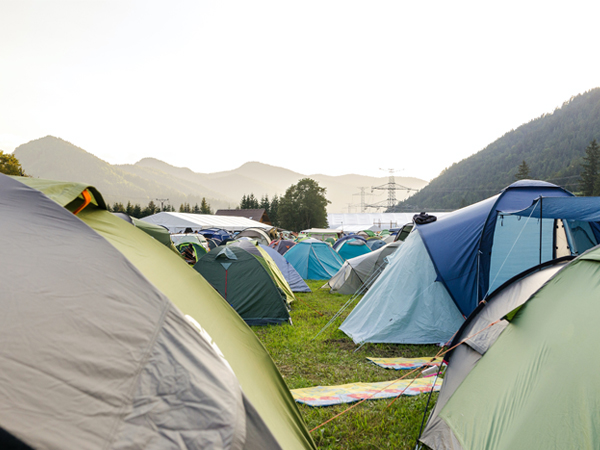
It's up to you to decide who you want to go camping with and how much space you want to buy a tent. Usually, the space for a single tent is approximately 200cm in length, 130cm in width, and 105cm in height, with a double tent of 220cm x 140cm x 110cm.
The tent space is designed based on the proportion of the human body. The average shoulder width of Asians is about 50cm, and their height is 175cm. Therefore, twice the shoulder width is 40-50cm higher than their height. The height of a person sitting up is the space for a tent.
Under normal circumstances, outdoor camping alone and a single tent space are sufficient to meet personal needs; If it's an outdoor team camping, the editor suggests choosing a double tent.
Because the weight of a single tent is usually around 1.5kg, and a double tent is about 2kg, which is similar in weight, but the space is much larger and comfortable to live in. It is important to share the weight of the tent with your group members in the case of a mixed tent; For family or multi person travel, you can purchase a three person or multi person account.
1. Tent size (number of users)
The general rule is to calculate based on the requirement of at least 65cm width for one person. For example, if two people use it, a width of at least 130cm is required, and the length is generally not less than 2 meters.
It should be noted that for hiking camping, considering weight bearing, the above method can be directly used for calculation, and generally single/double tent is the main method. However, if you are driving directly to the camping site, you can choose+1 or+2 according to actual needs. For example, if two adults use it, you can choose a triple tent. Children with strong physique can adjust their own dosage~~
In addition, if there are children or pet companions, it is also recommended to choose a larger size. If there is a high demand for space, it can be considered to have a foyer or match with a canopy.
2. Waterproof coefficient (outer tent waterproof, inner tent breathable)
Waterproof outer tent and breathable inner tent are two essential points for high-quality tents.
The most common tent coating is PU coating, which is a polyurethane polymer organic compound. PU coating is a stable and low temperature resistant coating commonly used on various fabrics.
The thickness and coating technology of PU coating determine the waterproof performance of the fabric. The coating thickness is expressed in mm, indicating the static waterproof column height of the coating under laboratory conditions.
The PU800 coating indicates that it does not leak under a static water column of 800mm. The PU800 coating can prevent light to moderate rain.
The coating of PU1000-1200 can prevent moderate to heavy rain.
Coatings exceeding 1500mm can be used in various environments.
The tent fabric is generally made of breathable fabric, and the breathability of breathable fabric is bidirectional. When the external humidity is high, moisture will also penetrate into the interior of the fabric. The texture of nylon fabric mainly depends on the quality of nylon yarn, textile density, dyeing technology, and textile process. Nylon fabrics with a density of 170T, 190T, 210D, and higher weave counts are available.
3. Strength and rebound force of the support rod
The tent tent poles must have high strength and good resilience. At present, the best tent poles are carbon poles, followed by aluminum alloy, fiberglass, and finally iron poles (almost useless except for troops).
The wind resistance performance of a tent is not only related to the texture and diameter of the tent poles, but also to the number of tent pole groups. Generally speaking, the more tent pole groups, the better the wind resistance performance.